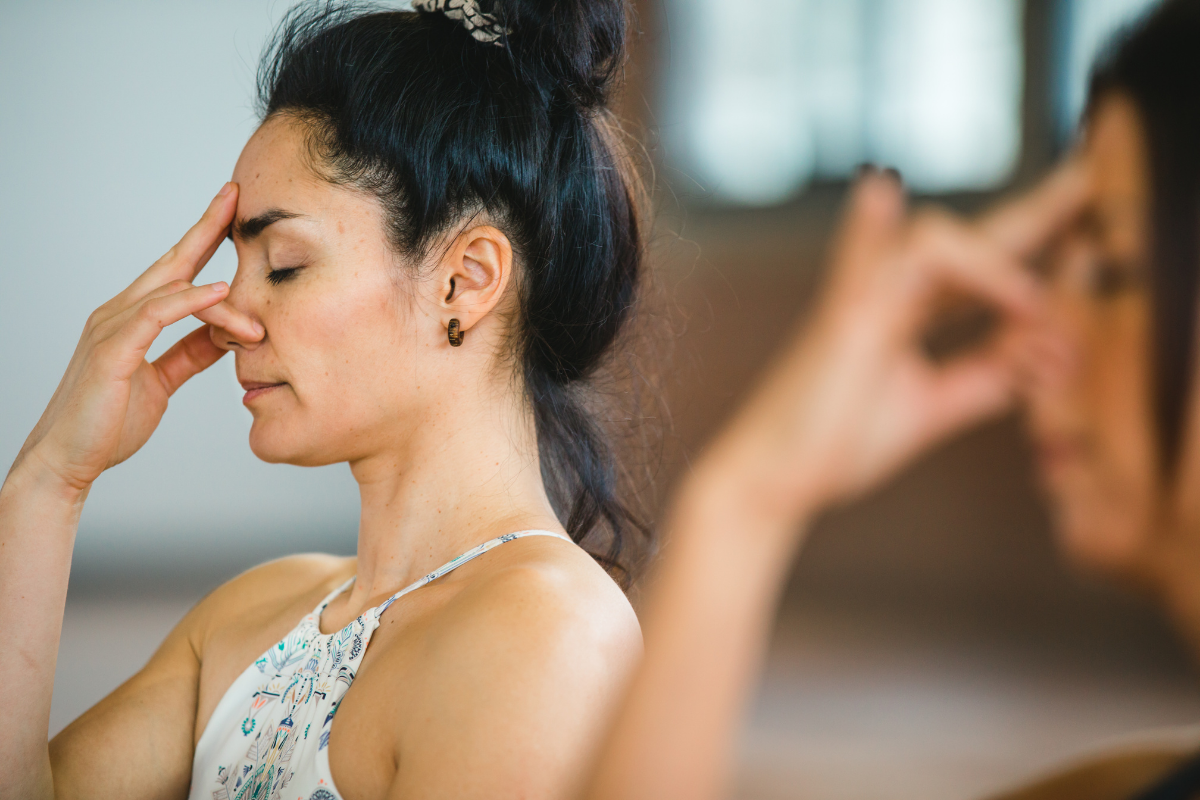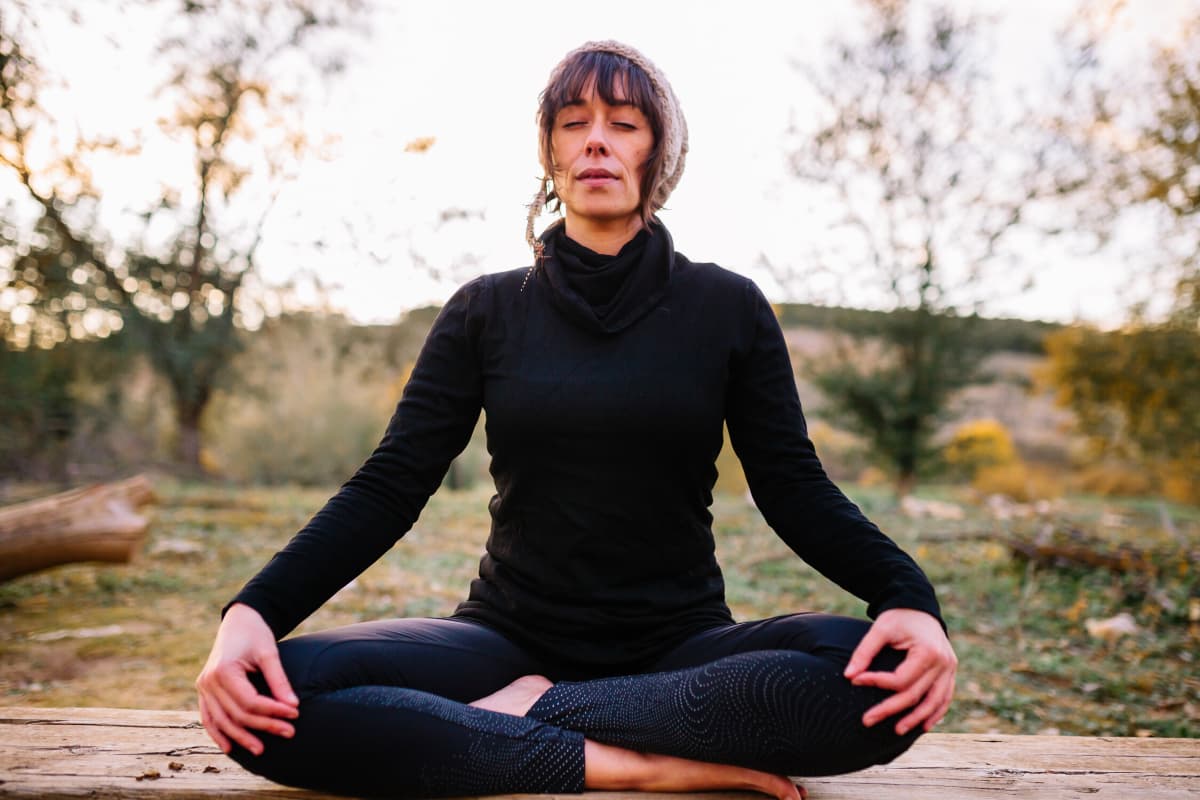And Breathe – Using Your Breath for Holistic Menopause Symptom Relief

More and more natural remedies that have been in practice by yogis and mindfulness practitioners for years are being used to help offset the many changes that come with menopause and perimenopause. One natural remedy centers around a powerful tool we’re already using – our breath.
Breathing is the one thing we all do all the time, but the way we breathe is often taken for granted. And if you’re experiencing menopause or perimenopause, focusing on your breath may help you relieve unpleasant symptoms like hot flashes, anxiety, and sleep disturbance. Breathing exercises produce a relaxation response, which leads to a reduction of the neurochemicals produced by stress. In this article, we share three breathing techniques.
Paced Respiration
In particular, paced breathing is recommended as a natural treatment for menopause symptoms. This technique can be applied at the onset of a hot flash to lessen the impact, before bed to help you sleep, or when you’re feeling stressed or anxious. Holistic behavior therapies like this can be especially helpful for women who cannot take hormone therapy drugs (or choose not to).
Paced breathing is slow, controlled, deep, rhythmic breathing sustained for a specified period. Paced breathing fully engages the stomach, abdominal muscles, and diaphragm. Your lower belly should expand with each outward breath.
How it Works
The technique is simple and can be quickly mastered with a bit of practice.
In. Lie down or sit in a comfortable upright position. Place one hand on your chest and the other on your belly. Breathe in slowly through your nose. As you inhale deeply, count to 4. The hand on your belly should rise, while the one on your chest should stay still.
And out. Now breathe out through pursed lips for a count of 6. (Your count can be shorter if this feels too long, but make sure your exhale is longer than your inhale.) The hand on your belly should move down to its original position.
The goal is to take 6 to 8 breaths per minute. And research has found paced breathing to be most effective when done twice daily in 15-minute intervals.
Alternative Nostril Breathing
Alternate nostril breathing is a breathing exercise known to relax the body and mind. Alternate nostril breathing, also known as nadi shodhana, is often used in yoga and mindfulness practices. In addition to decreasing anxiety, alternate nostril breathing is thought to improve lung health, which is especially relevant for women experiencing menopause. Menopause is associated with lower lung function and more respiratory symptoms, making this technique especially helpful.

How it Works
- Sit comfortably in a chair or cross-legged on the floor. Be mindful of your posture.
- Rest your left hand in your lap and bring your right hand up towards your face.
- Exhale completely and use your right thumb to gently close your right nostril.
- Inhale through your left nostril and use your right ring finger to gently close your left nostril.
- Inhale through your left nostril and use your right ring finger to close your left nostril.
- Open your right nostril again and exhale.
- Inhale through your right nostril, then close the nostril again.
- Open your left nostril and exhale.
- Repeat this exercise whenever you notice your breath becomes faster or shallower.
Breath Visualization
If new to breathwork, you may want to start with a simpler exercise. Try to visualize your breath moving throughout different areas of your body. With each breath, feel it move to a new area, ‘pool’ there, and release its tension.
There’s a reason why practices like yoga and meditation place so much emphasis on the breath. Our breath does so much for us, and it’s the driver for relaxation. And mind/body relaxation can decrease both the frequency and severity of hot flashes, help us sleep, lower stress levels, and calm an anxious mind. Our ability to control our breath and practice mindful breathing can do wonders.
For more holistic strategies to manage your menopause symptoms, download Midday from the App Store or visit us at Midday.Health.
Brianna Litchfield is a freelance writer specializing in health and wellness. She has a Master’s Degree in Psychology.
Sign up for more unique women’s health content
By submitting this form, you agree to the Lisa Health Privacy Policy and Terms of Use


